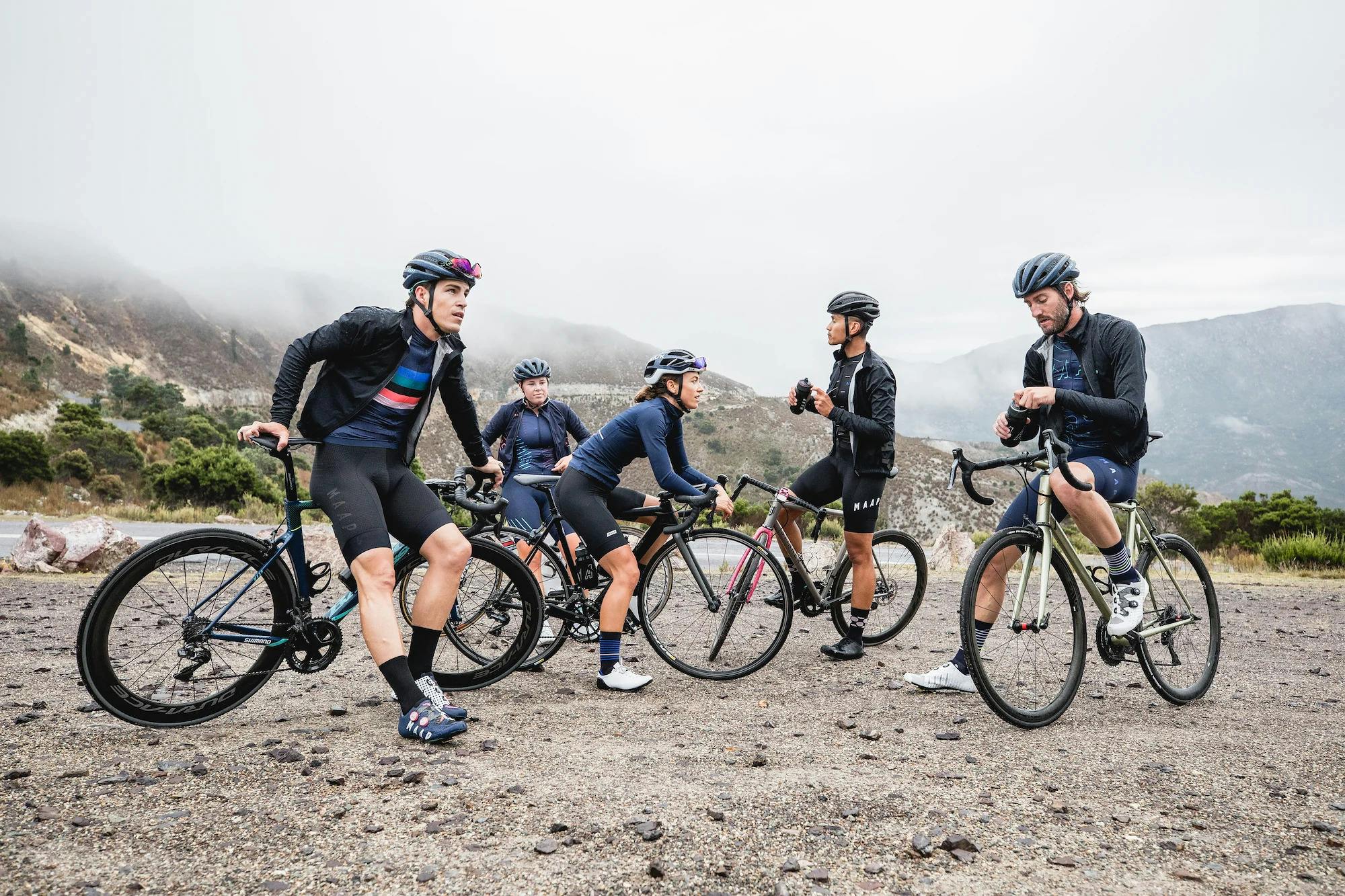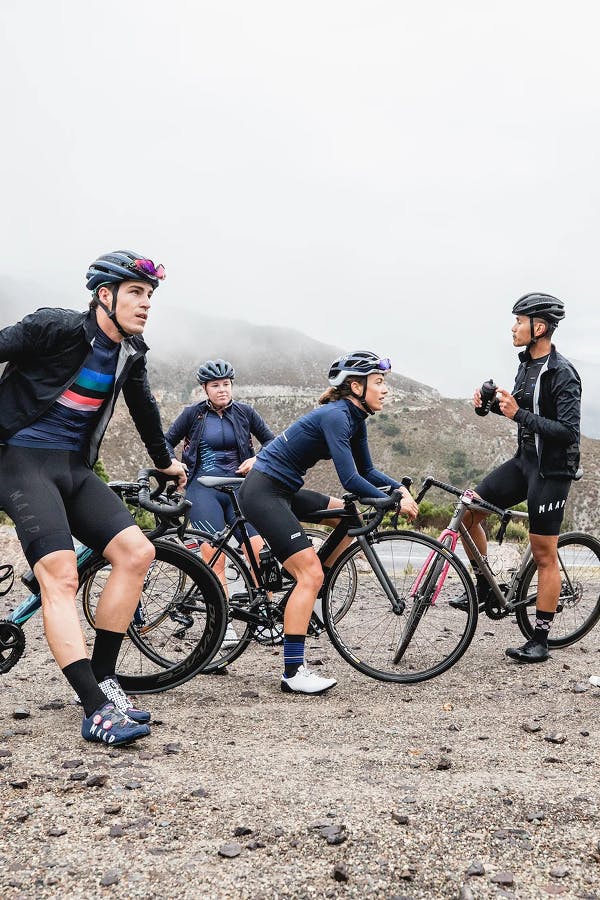

At the bottom of the world with nothing between it and Antarctica, Tasmania is a rugged island sitting at the off of Australia’s south coast. It’s quiet, raw and totally remarkable. Home to a string of elite cyclists and widely celebrated climbs, Tasmania’s reputation in the cycling world is continuing to swell – deservingly so. Yet, the largely unpopulated wilderness, protected within national parks and reserves, means there’s still much to explore. So, we packed up and headed down to a remote part of Western Tasmania and still can’t believe what we found.
In 1822, eight convicts escaped from the Macquarie Harbour Penal Station on the West Coast of Tasmania. Fleeing from what was known as one of the most brutal penal settlements in the country, they ventured into the rugged and remote bushland of the West. Despite their bold ambitions and hardened character, the men were no match for the harsh and untouched wildland. Starving and consumed by exhaustion, they would slowly succumb to the wilderness, and eventually – one by one – to each other.
Yet, nothing could have prepared me for the unique adventure that lay ahead. Empty silent roads, ancient mountains, bright starry nights…the Tassie field trip wasn’t going to disappoint.
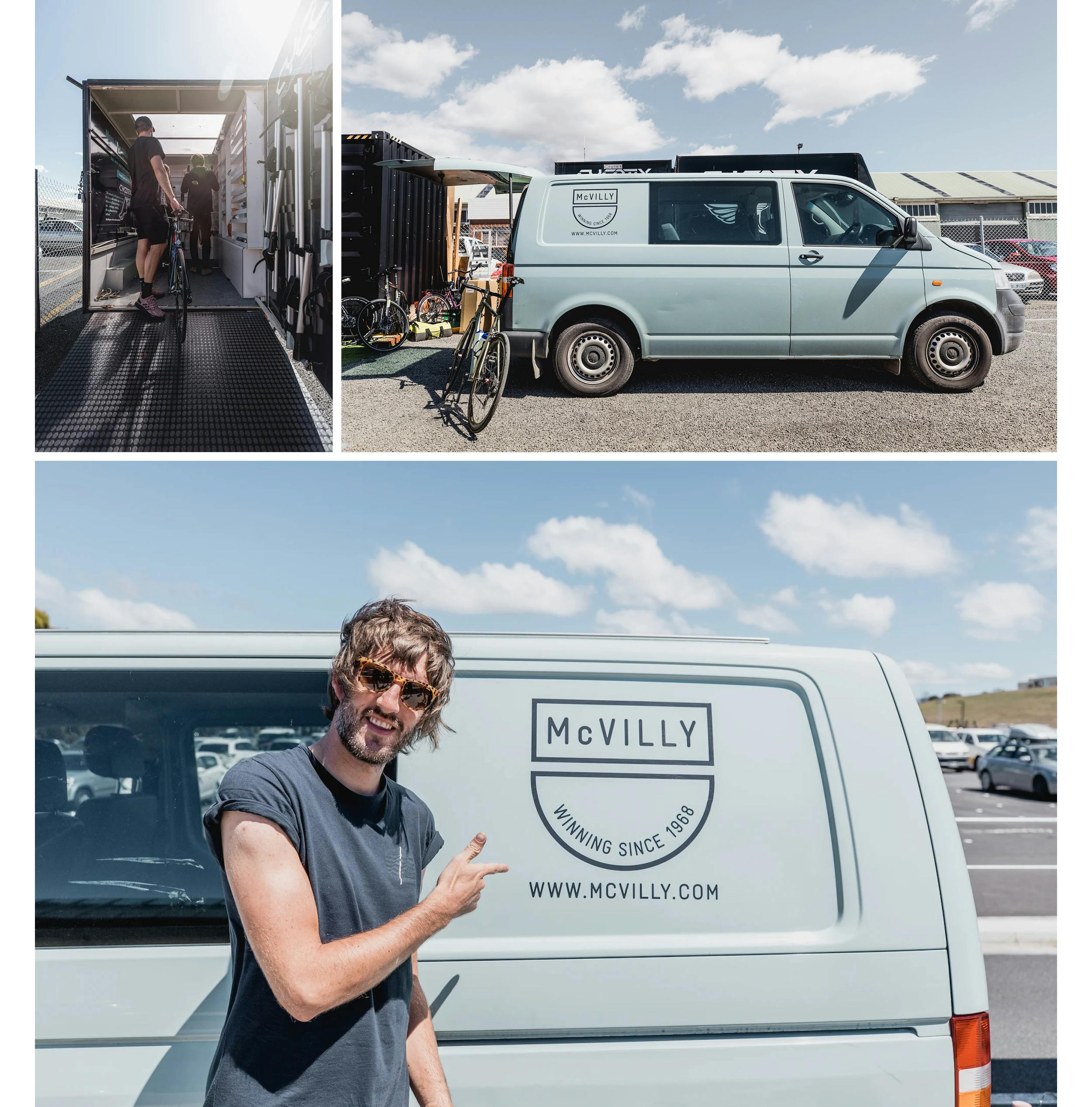

Heading out west from Hobart, beyond the small town of New Norfolk, is a narrow winding road named Gordon River Road. The road, spanning nearly 170 km in length, is a highway to nowhere: a dead-end road that cuts deep into the Tasmanian wilderness, snaking, dipping, twisting and climbing, until eventually reaching the tiny settlement of Strathgordon and the monumental Gordon Dam.
Where the road ends in Strathgordon, civilisation ends too. Here, there are only the mountains, towering tall and brave above everything else, and the great expanse of Lake Pedder – an impossibly still body of water, mirroring the untouched beauty around its banks.
Crammed into a van with half the MAAP crew, music humming from the speakers, we drove into the wilderness, towards the place at the end of the road. Bikes, kit and gear were packed in boots and they filled out the trailer behind. It could mean only one thing, the next field trip was officially underway.
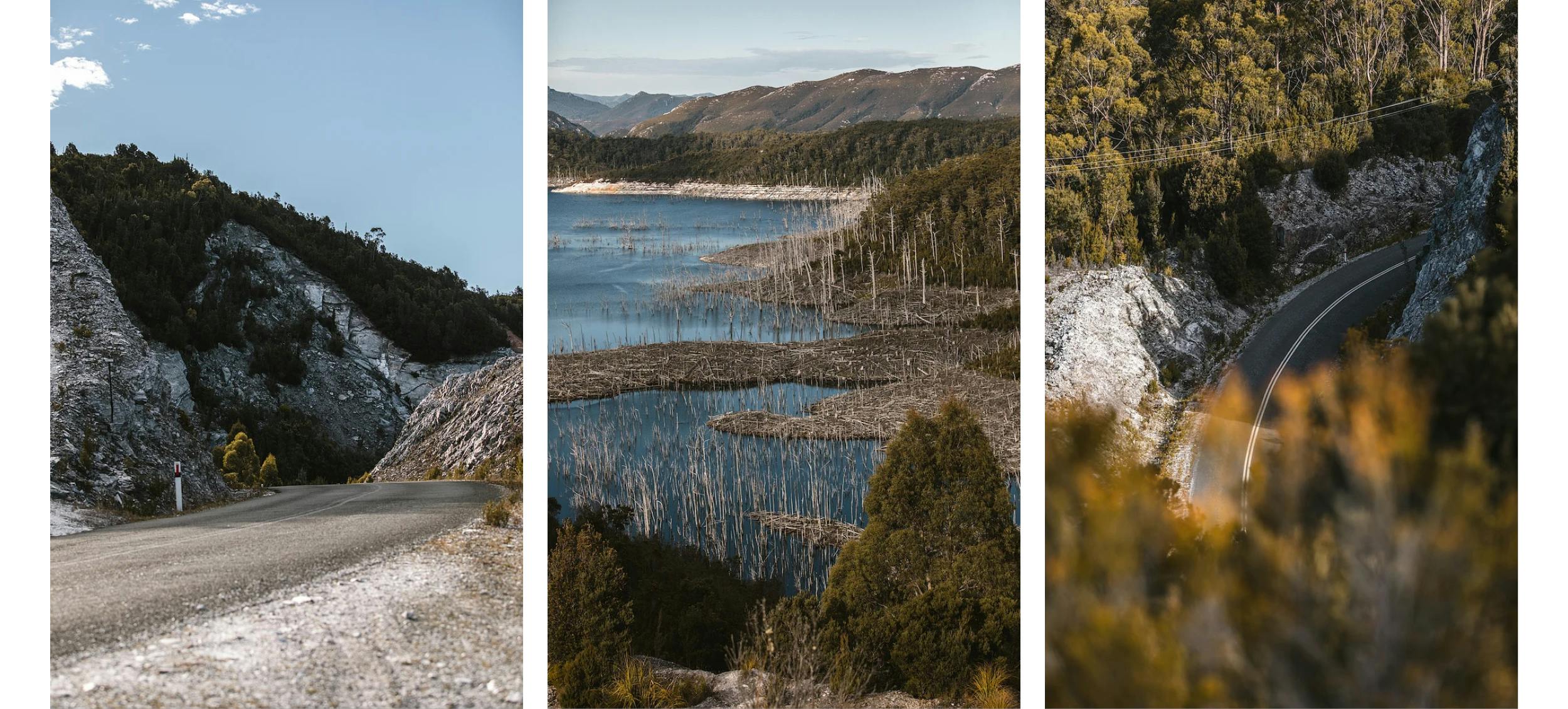

The population of Strathgordon experienced a steep incline when the eight of us arrived in our navy green van. The few locals were surely taken aback by us: a mix of Australians from all corners of the mainland, a tall rockstar-looking Scotsman known as Monty (who recently moved from Dubai to Italy), and a couple of Californians (one now living in Melbourne and the other about to head to South Korea to shoot the Winter Olympics). We must have looked like some kind of circus rolling into town. Yet, this is at the heart of the MAAP field trips – they’re a collision of different worlds and people, drawn together by the love and adventure of the ride.
An hour later, Scott Bowden – a bonafide Tasmanian and professional cyclist for the Bennelong SwissWellness team – clambered into Strathgordon with his old school (and well-loved) Toyota Camry. You could tell this was Scotty’s stomping grounds as soon as he arrived: only a local Tasmanian could feel so at home in a place like this. The small chat could wait, he told us, there were more important tasks at hand. It was time to explore. It was time to ride.


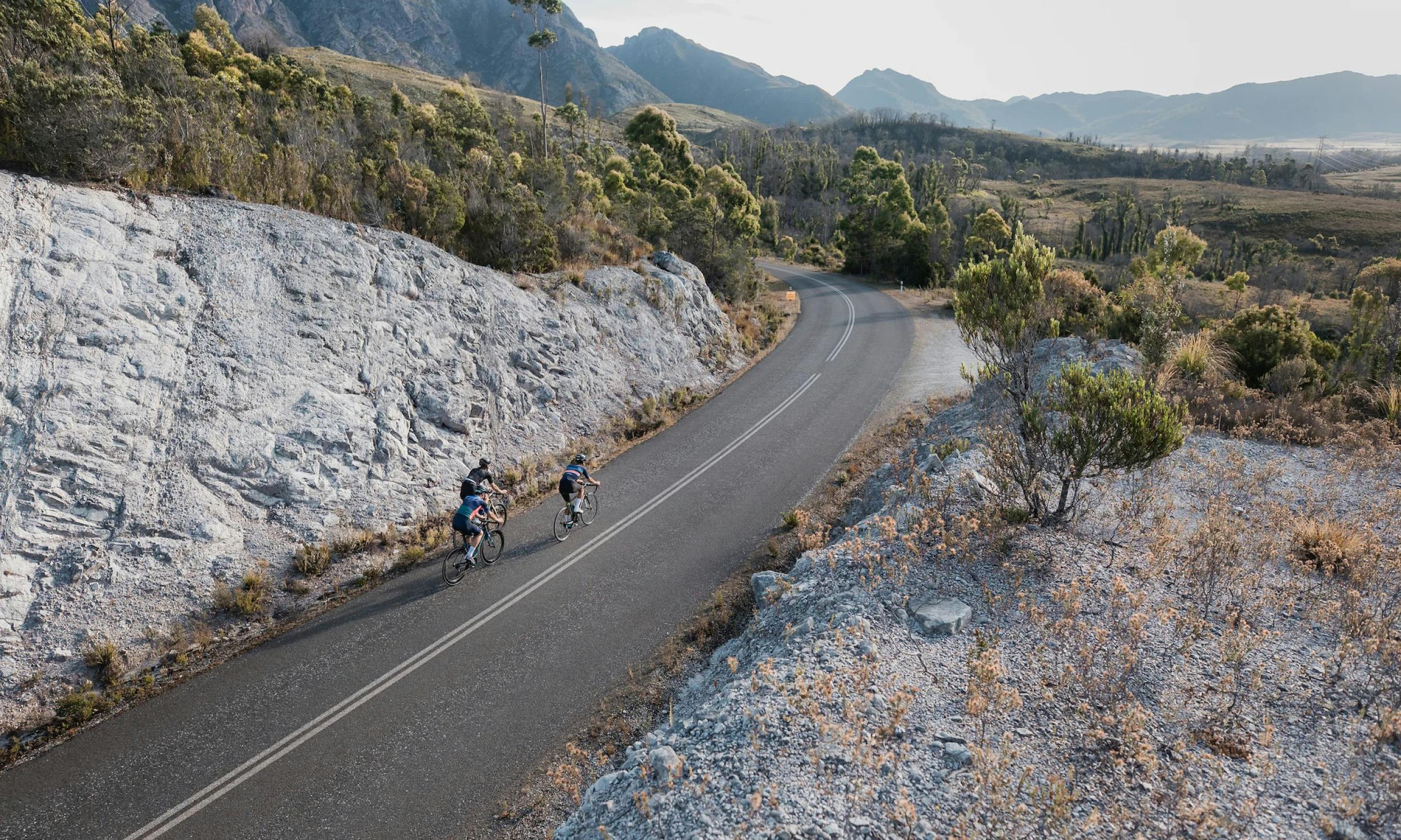
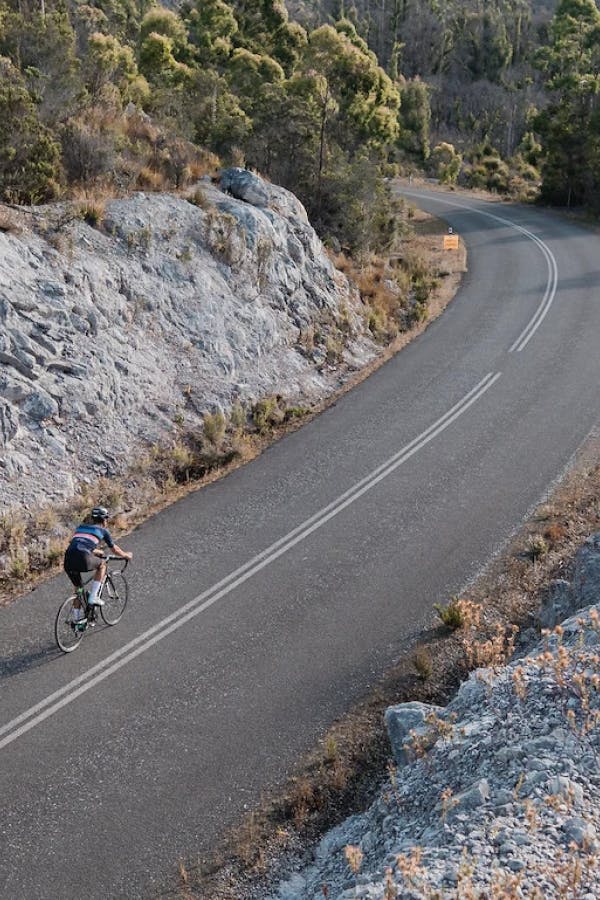
I thought it was a joke at first.
“There’s no working wifi at the hotel,” Monty said when we arrived back, “and there’s no phone reception here either.”
Surely I had just misunderstood his thick Scottish accent. Where were the sub-titles?! But he smiled at back me, nodding.
“I’m serious, there’s nothing,” he confirmed.
Just like that, we were disconnected from the world. I couldn’t help but think back those convicts in 1822, and how they too didn’t have any internet… and, well we know how that ended. Yet despite this initial anxiety, the unexpected digital detox became a release for everyone: no longer tied down by the busy digital world, we were just left with each other, our bikes and the never-ending Tasmanian wild. What could go wrong?


At 5 am the next morning, we were on our bikes.
Two new crew members joined us – Maddie and Ron. As we began our ride, they told us of how they arrived at midnight the night before. About their drive through the national park in the dark of night, only to arrive without a clue of how to get into their rooms. The problem? Our text messages explaining how to get in were lost to the disconnected abyss.
Our conversations were only interrupted by the view ahead. It was as though we were witness to something truly special here, as if we had been transported to a world before our time.
“I can’t believe this place is real,” Maddie said as we rolled back towards the hotel later that day. And I couldn’t quite believe it either.
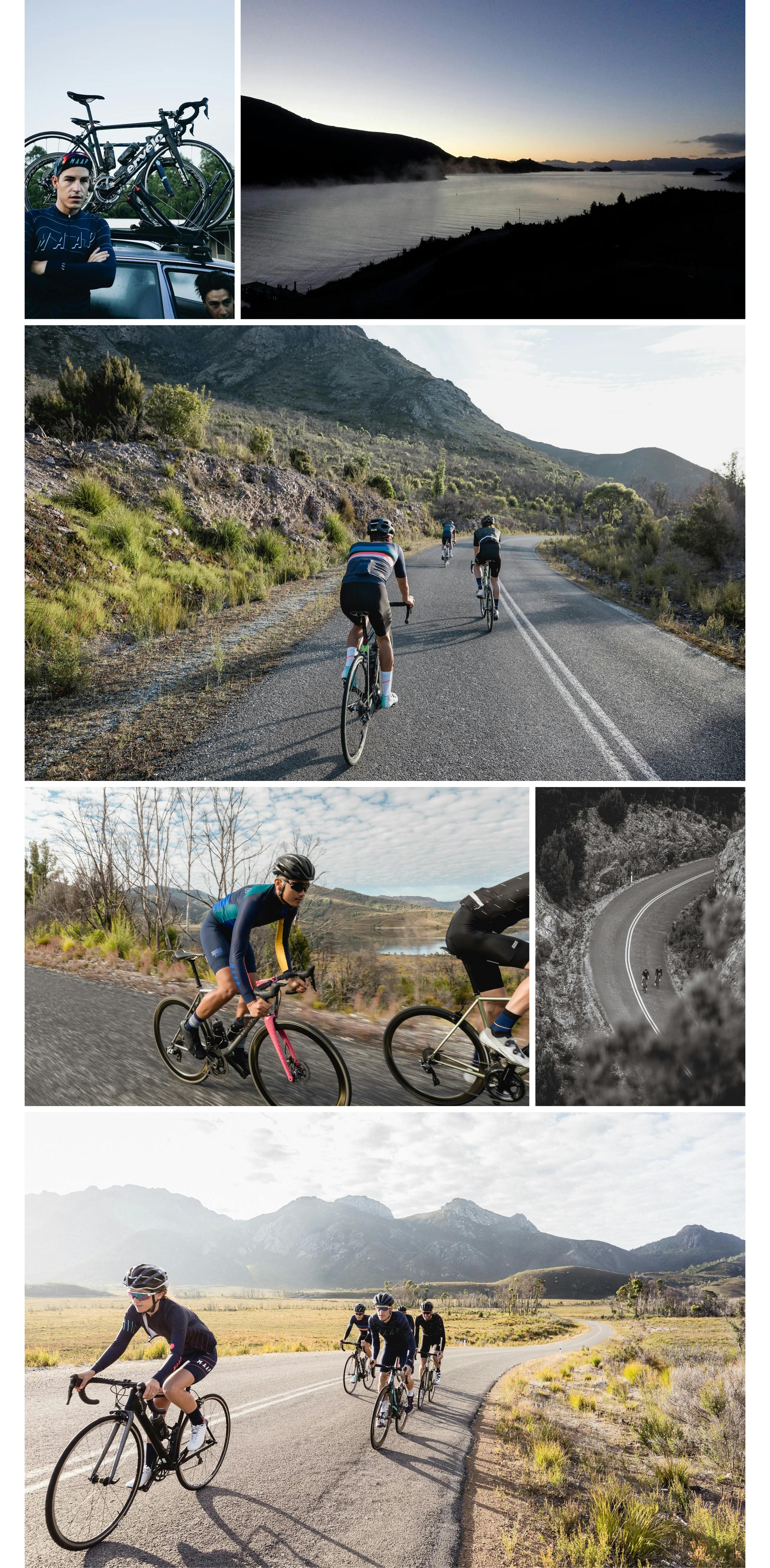

The following day we made the road trip to our next destination, Queenstown. Set further north, and close to the west coast, Queenstown is a place known for its rich mining history. Along the road into Queenstown, the landscape slowly morphed into an alien-like moonscape. It was as if the world was turned inside out.
When we arrived in Queenstown, it was as though we had walked onto a film set. The quiet main street, acting as a ramp towards the mountains behind, had a country charm you only ever see in the movies. In the middle of the street, in an old bank-turned-Airbnb, on top of an art gallery (where two Melbourne artists had just taken up residency, no less) was our homebase for the next few days.
Quickly unloading our bags, we ventured to the local pub. The pub, situated on the corner of the main road, was a grand old building, telling of Queenstown’s once vibrate life. Ordering the Tasmanian classic beer, Cascade Draught (or ‘Cassy D’s’ as the locals say) we unwound and shared our stories so far, and of our excitement for the ride that still lay ahead.
We were then joined by our last crew member, Lauren Perry, a Tasmanian track cyclist. She made the journey from Launceston, jumping at the chance to ride in this remote region of her home state. The full team had finally been assembled.


The next morning we awoke to the sound of rain. No matter: we had strong coffee, our rain jackets and an overwhelming excitement that would warm the coldest of climates.
Straight out from the main part of town, the road turned up. It then twisted and turned; carving up the mountainside, it wrapped around the edge of the cliff like a coiled snake strangling its prey. Maddie danced up the steep inclines next to me, pushing hard with each punishing pinch. You could tell she was at home in the mountains.
“Shit,” I said to Monty, my short breath cutting at each word, “I’ve been here before.”
Eight years earlier, at the 2010 Tour of Tasmania, I raced up each bend of this climb in a team trial. How strange it felt that life led me back here, to the remote outback of Tasmania, on my bike again, yet for a completely different reason. But that’s the beauty this sport and these field trips; when you’re on a bike you’re allowed to pause, take stock for a minute, and realise how lucky you really are.


At the summit of the climb, the earth opened. The view of the Iron Blow Out – a gigantic hole blown out from the heart of the mountain, with an almost metallic-looking aqua lake at its base – was our prize for conquering the slopes of 99 Bends.
On the other side of 99 bends is the Lyell highway decent. After regrouping at the top of the climb, we broke off and sprinted down the road. We picked up speed, slowly at first, then the world blurred around us as we tucked down lower, the air cutting past our bodies as we pushed faster and faster.
“We have to ride back up that, don’t we?” Lauren said.
“Don’t remind me,” Ron laughed. We all then turned around and saw the road head back up into the clouds hovering behind us.
A few hours later, we returned to Queenstown, collapsing at the local Cafe. It was surely the biggest order the small colourful shop had ever received. A group of hungry cyclists’ is a sight to be seen.
With coffee and food aplenty, we chatted about the stories from the day. We joked about the burn in our legs, which felt like it would never fade away. We dissected Maddie’s epic QOM attempt on 99 bends, where she smashed the next best time by minutes. It made us all feel better about her smiling face as we suffered, grimacing in the rain next to her.
That night we walked to the pub. In the middle of the street, a man played the bagpipe to no one in particular. Then one of the Melbourne artists, staying in the gallery below us, skateboarded down the main strip right past us, drifting slowly into the sunset. Yep, Queenstown was a place unlike anywhere else.


Heading out for the final day of riding, I thought Tasmania could give us no more. The days before had left us in an ever-present state of awe. The quietly brutal roads had left our legs heavy with fatigue. There couldn't be more surprises hidden in the wilderness, could there?
“I think I just saw a T-rex,” Ollie, co-founder of MAAP, joked only a few minutes into the ride. The view ahead swallowed us all: a never-ending sea of green, filled by ancient trees and rolling vertical mountains that defied gravity, surrounded us. A world untouched by the human hand.
After the first section of the ride, half of the group turned back towards Queenstown. Ollie, Ian, Ron and I ventured on, somewhat foolishly, deeper in the remote West.
100 km later, we were still riding. Our bodies were wrecked, the incessant climbing and descending through hills and mountains, taking its toll on us. We were defeated.
Back in Queenstown, we clicked off our bike computers: 130 km, 2600m of climbing. Tasmania certainly had a lot up its sleeve.


The next morning we packed up our bikes. Our helmets, shoes and cycling kit was folded back into our suitcases. From worlds apart, we met in the middle of nowhere. At first strangers, we became mates. All good things must come to an end. Still, on two wheels across the wilderness of Tasmania, we shared something special – a forgotten world rarely ridden, which we’ll never forget.
If you want to check out more of the riding and behind the scenes revelry from the trip, have a look at our video from Tassie. It adds a whole other dimension to the adventure!
And to learn more about MAAP's latest styles by visit MAAP.cc
